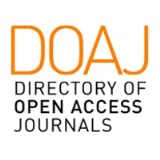Educational assessment: a reality in the museum
DOI:
https://doi.org/10.58265/pulso.5058Keywords:
Education Program, Quality Evaluation, Heritage, Museum-School Relationship, Best PracticesAbstract
This work has been the pilot test of the Qualitative Evaluation of Educational Programs in Spain pro¬ject, (ECPEME) developed in 2011. The choice of both museums, Casa Natal de Jovellanos and Piñole Nicanor de Gijón (Asturias), as the first stage of evaluation, is justified by the presence of a well-established educational program with more than 20 years of tradition and the close school-museum relationship (85% of the municipalitys schools participate in activities), as well as the continuity of the person in charge of designing and implementing the promoted educational ac¬tivities. We have followed the logic procedures of the Illuminative Evaluation Parlett and Hamilton (Stufflebeam and Shinkfield, 1995) in order to develop a proposal for evaluation of educational interventions conducted at the museum. Using a combination of methodological protocols, allowing us to achieve a deeper and more rigorous analy¬sis of the educational effectiveness of museum educators. Aiming to understand not only aspects of their teaching performance but also of their working conditions.
Downloads
References
Bisquerra, R. (Coord.).(2004). Metodología de la investigación educativa. Madrid: La Muralla.
Calaf, R. (2009). Didáctica del Patrimonio: Epistemología, metodología y estudio de casos. Gijón: Ediciones Trea.
Calaf, R. y Fontal, O. (2010). Como enseñar arte en la escuela. Madrid: Síntesis.
Casanova, M. (1995). Manual de evaluación educativa. Madrid: La Muralla.
Escudero, T., Mateo, J., De Miguel, M., Mora, J. y Rodríguez, S. (1999). La evaluación del profesorado de secundaria: la opinión de los profesores. Revista de Educación, 318, 227-250. Recuperado de http://www.mecd.gob.es/dctm/revista-de-educacion/articulosre318/re3181207707.pdf?documentId=0901e72b81270baf
Esteve, J. M. (2000). El profesor de secundaria del siglo XXI. Un nuevo perfil para una nueva etapa de educación. Sociedad Española de Pedagogía. Hacia el tercer milenio: cambio educativo y educación para el cambio, 2, 421-444.
Fernández Enguita, M. (1990). Educación, formación y empleo en el umbral de los noventa. Madrid: CIDE.
Fontal, O. (2003). La educación patrimonial: teoría y práctica en el aula, el museo e internet. Gijón: Ediciones Trea.
Fontal, O., Pérez, S. y Martín, S. (2012). Manual de Educación Patrimonial. Gijón: Ediciones Trea.
Gimeno Sacristán, J. (1996). La evaluación en la enseñanza. En: Gimeno Sacristán, J. y Pérez Gómez, A. Comprender y transformar la enseñanza, (pp.334-394). Madrid: Morata.
Hernández, F. (1992). Evolución del concepto de museo. Revista General de Información y Documentación, l, 2, 85-97. Recuperado de http://revistas.ucm.es/byd/11321873/articulos/RGID9292120085A.PDF
Hooper-Greenhill, E. (1998). Los museos y sus visitantes. Gijón: Ediciones Trea.
Mcmillan, J. y Schumacher, S. (2005). Investigación educativa. Madrid: Pearson.
Stufflebeam, D. y Shinkfield, A. (1995). Evaluación sistemática: Guía teórica y práctica. Madrid: CIDE.
Tejedor, J. (2000). El diseño y los diseños en evaluación de programas. Revista de Investigación Educativa, 18, 2, 319-339. Recuperado de http://revistas.um.es/rie/issue/view/9951
Downloads
Published
How to Cite
Issue
Section
License
Copyright (c) 2022 Pulso. Revista de educación

This work is licensed under a Creative Commons Attribution-NonCommercial-NoDerivatives 3.0 Unported License.
This journal offers immediate open access to its content based on the idea that offering readers free access to research favours a global exchange of knowledge.
Papers are published in the electronic version of the journal under a Creative Commons License: Attribution-NonCommercial-No derivatives 4.0 International
Authors are allowed and encouraged to promote the post-print version (reviewed and accepted for publication version) of their work online before publishing them. This favours their earlier circulation and dissemination and thus a possible increase in their citation and reach among the academic community.













